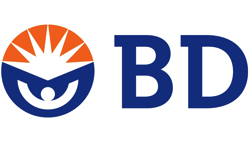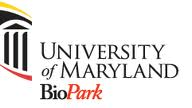

After the trip UNN participants were interviewed and filled the Feedback forms (see the Appendix). The results of interviews and feedback forms processing may be summarized as follows.


After the trip UNN participants were interviewed and filled the Feedback forms (see the Appendix). The results of interviews and feedback forms processing may be summarized as follows.
![]()
State government agency expenditures for research and development totaled $1.404 billion in FY 2011, an 11.3% increase over the $1.261 billion reported in FY 2010. Expenditures for R&D facilities (construction projects, major building renovations, and land and building acquisitions intended primarily for R&D use) totaled $109 million in FY 2011, a 1.7% increase over the $107 million reported in FY 2010. This InfoBrief presents summary statistics from the FY 2010 and FY 2011 Survey of State Government Research and Development, sponsored by the National Science Foundation (NSF).
The FY 2010 and FY 2011 survey presents the most recent NSF statistics of R&D activities performed and funded by state government agencies in each of the 50 states, the District of Columbia, and Puerto Rico. Survey data are available by state and by individual state agency. For the first time, NSF collected two fiscal years of data from state governments as part of a single survey operation. In addition, a new category was added to this survey, so state agencies were given the option to separately classify their energy-related R&D expenditures. Other R&D categories include agriculture, environment and natural resources, health, transportation, and other.


Now on its sixth run, the Research Commercialization Introductory Course is a very popular online course designed to help science and engineering researchers better understand how research commercialization works. Over 5000 students, faculty and researchers from across the US have taken this course since it’s been offered.
Research commercialization involves taking articles, documentation, know-how, patents, and copyrights, which are created during research activities and getting them to users and patients for real societal impacts. In some cases, commercialization involved taking patents based on the research and licensing them to a company. This usually involves also having the researchers consult to the company. In other cases, commercialization involves forming of creating a startup and applying to federally funded commercialization programs. In all cases, though, research commercialization typically involves defining the nature of the research being commercialized (e.g., in a patent or intellectual property agreement), establishing a commercial relationship with another party (e.g., employment, a sale or license), and negotiating a contract (e.g., compensation).


Emergent BioSolutions Inc. presented preclinical data on its lead bispecific Adaptir therapeutic, ES414, at the 5th Annual Protein and Antibody Engineering Summit (PEGS) in Lisbon, Portugal. The ES414 molecule was constructed using Emergent’s Adaptir technology platform and is being developed as a potential therapeutic for metastatic castration-resistant prostate cancer (mCRPC).
The presentation shared results of preclinical studies demonstrating ES414 is pharmacologically active and well tolerated. Preclinical in vitro and in vivo studies have shown ES414 redirects T-cell cytotoxicity (RTCC) towards prostate cancer cells expressing prostate specific membrane antigen (PSMA), an antigen commonly found on prostate cancer cells. The ES414 molecule selectively binds and links the T cell receptor on cytotoxic T cells to the PSMA on tumor cells, triggering tumor cell destruction.


Newly-minted MBA graduates are more frequently turning away from finance jobs as financial crisis aftereffects linger and instead picking careers in the tech sector.
In fact, for the first time, more Stanford Graduate School of Business grads this year chose tech jobs over finance jobs, The Wall Street Journal reports. Thirty-two percent of this year’s class picked tech while 26 percent headed into finance — those figures were 13 percent and 36 percent, respectively, two years ago.


BD Diagnostics, a segment of BD (Becton, Dickinson and Company), a leading global medical technology company, announced today at EUROGIN 2013 that the Company has achieved CE/IVD marking of its BD Totalys(TM) MultiProcessor, an automated instrument that integrates the pre-processing for the BD SurePath(TM) Liquid-based Pap Test with a molecular aliquot, maintaining sample integrity while improving efficiency in the lab. The Company also supported a symposium at the conference which highlighted the performance of the new BD Onclarity(TM) HPV Assay on the BD Viper(TM) LT System, which is pending EU certification.
“These new products are part of BD’s integrated Women’s Health portfolio and support full sample chain of custody, high diagnostic accuracy and a clear patient management approach – all important elements to improving patient care,” said Paul Holt, Global Market Segment Leader, Women’s Health & Cancer – BD Diagnostics. “When laboratories and physicians partner with BD Diagnostics, they benefit from highly customized, leading-edge solutions for the rapidly changing landscape of cervical cancer screening.”


Wednesday, Nov. 20, 2013, Southeastern Universities Research Association
In 2010, the University of Virginia created a pan-university innovation initiative designed to elevate innovation, entrepreneurship, and translational research as core competencies and key strategic priorities of the institution. A long-time practitioner of “traditional technology transfer”, UVa sought nothing less than a “sea change” in its innovation ecosystem and culture in creating this new innovation platform. Intellectual property is still protected, marketed and licensed (i.e., “traditional technology transfer”). But beyond these activities, the university has nurtured an ecosystem (both within the institution and beyond) which can be leveraged to identify innovation and knowledge assets more broadly and earlier; to advance those assets through proof-of-principle and commercial relevance assessments; and to leverage such assets and relationships to create products, services, companies, and jobs – and value for the university. Along the way, UVa Innovation actively uses its research capacities, social media, crowd-funding, grand challenge competitions, outreach and networking, and relentless “innovation proselytizing” to engage increasing numbers of university students, faculty, staff, administrators, alumni, and supporters in elevating innovation as core competency and focal point of UVa’s mission.


The University of Maryland BioPark announced today that the Clinical Trial Center for Functional Foods (CTCF2) has signed a lease for office space at the BioPark. The main home for the CTCF2 is located in the Jeolla-buk Province of South Korea, and is part of the Chonbuk National University Hospital.
“When the BioPark was founded, we had the goal of establishing a strong presence from the international life sciences community,” said Jane Shaab, University of Maryland Research Park Corporation Senior Vice President and Executive Director of the UM BioPark. “We began building this presence with the SNBL Clinical Pharmacology Center, which is a wholly owned subsidiary of a Japanese biomedical company, and now we have our first investor from Korea.”
![]()
Nearly 6,000 people took part in the second annual Baltimore Innovation Week at the end of September, in partnership with many great organizations throughout the region. Full disclosure, we at Technical.ly Baltimore helped lead the big open calendar of events. Find a wrap video and some outcomes of the week below. This year, we saw […]


The Johns Hopkins University Applied Physics Laboratory (APL) will hold its second annual Parent STEMpowerment Workshop on Nov. 17, in the Kossiakoff Center on its Laurel, Md. campus. The free workshop, from 2 p.m. to 5 p.m., is designed to help parents of elementary and middle school students prepare their children to explore careers in science, technology, engineering and math (STEM).
The event, developed for parents with little or no exposure to STEM fields, will provide resources to support children in the pursuit of STEM careers and impart a better understanding of the importance of STEM.